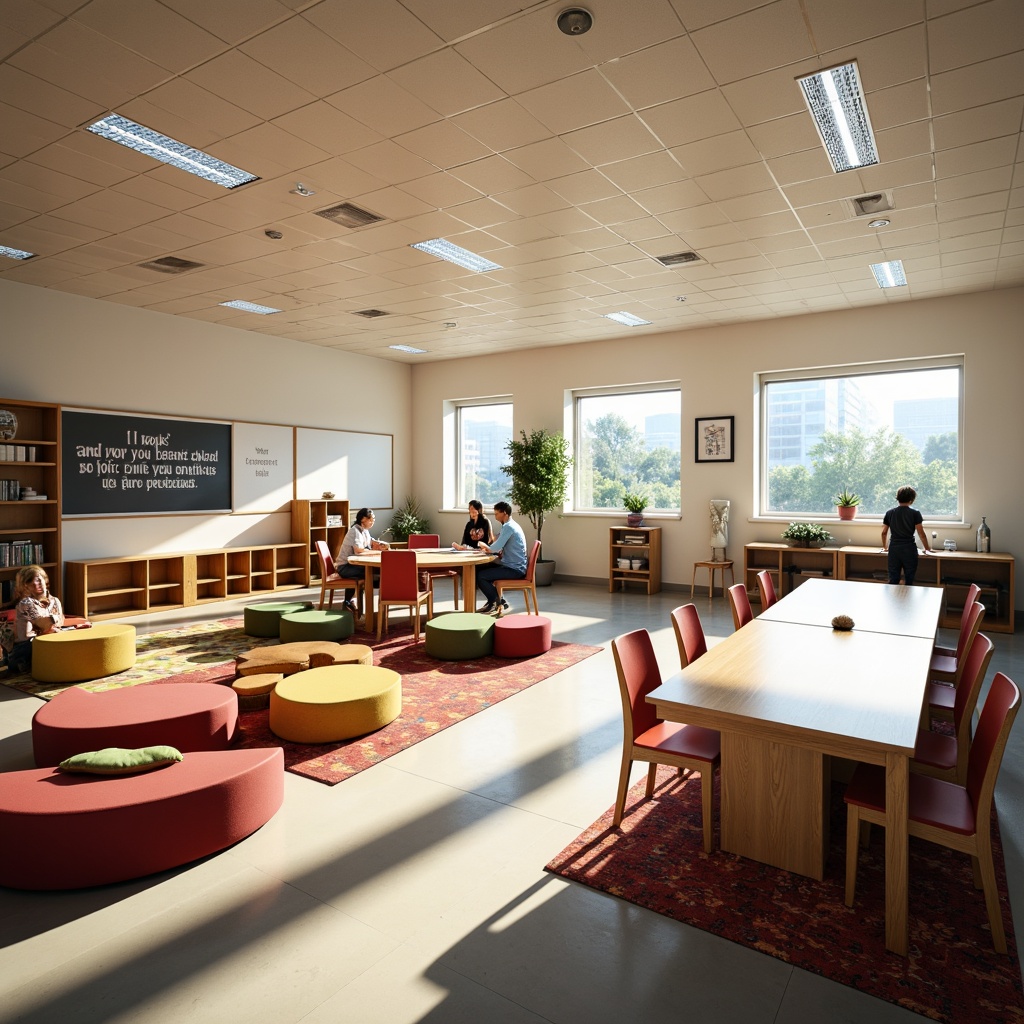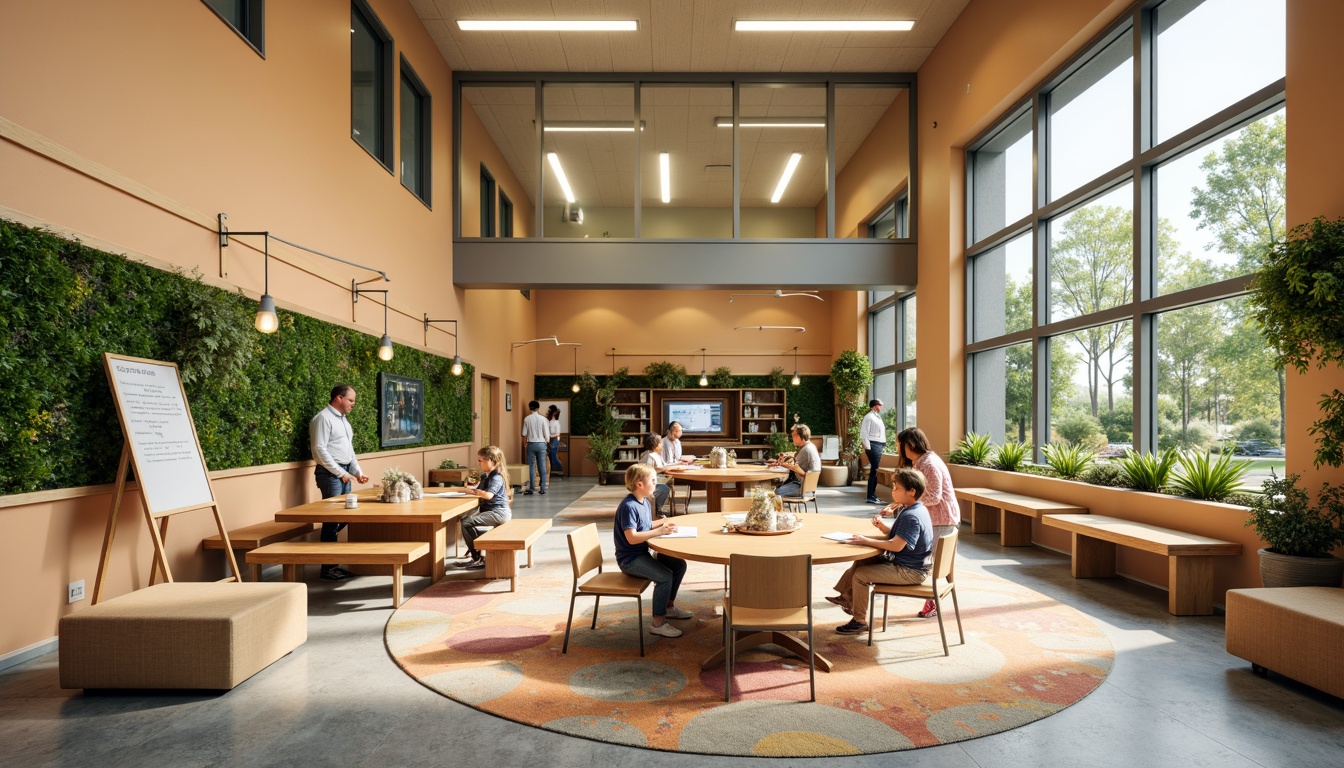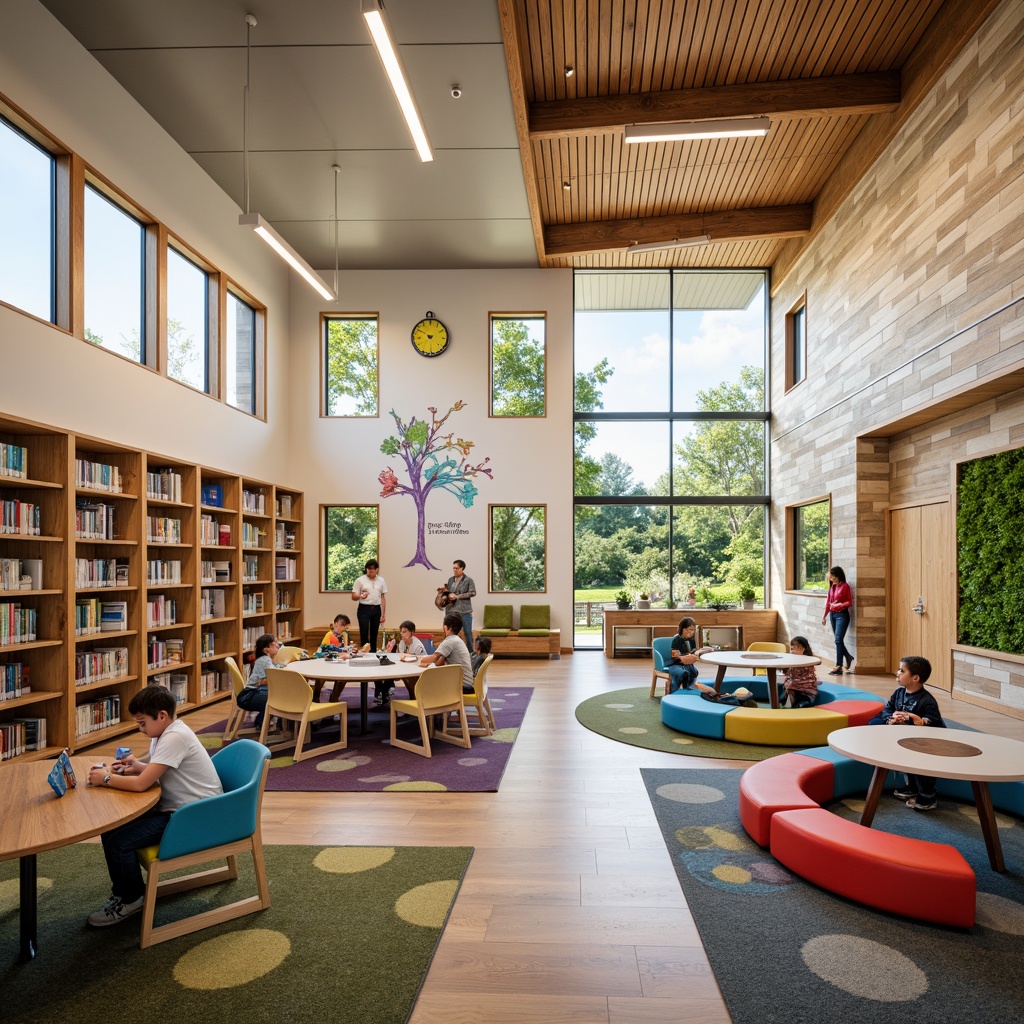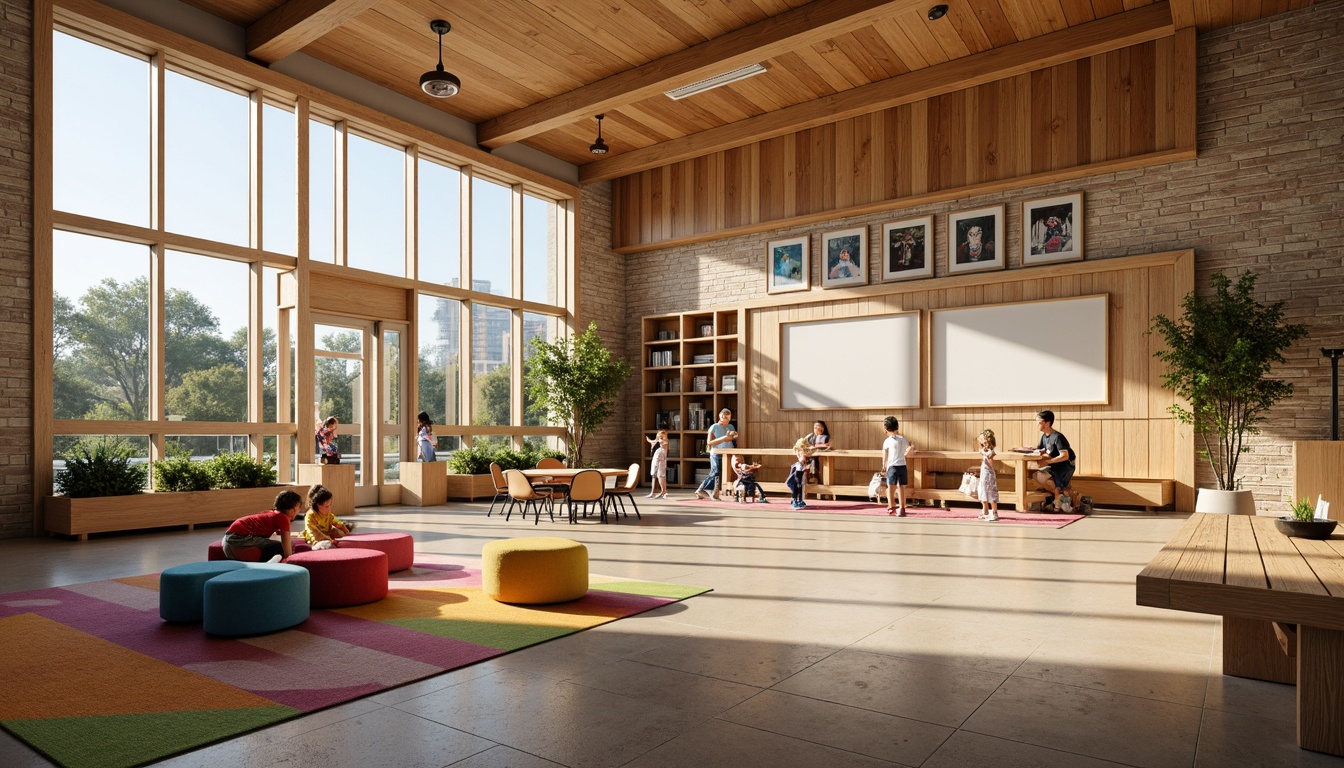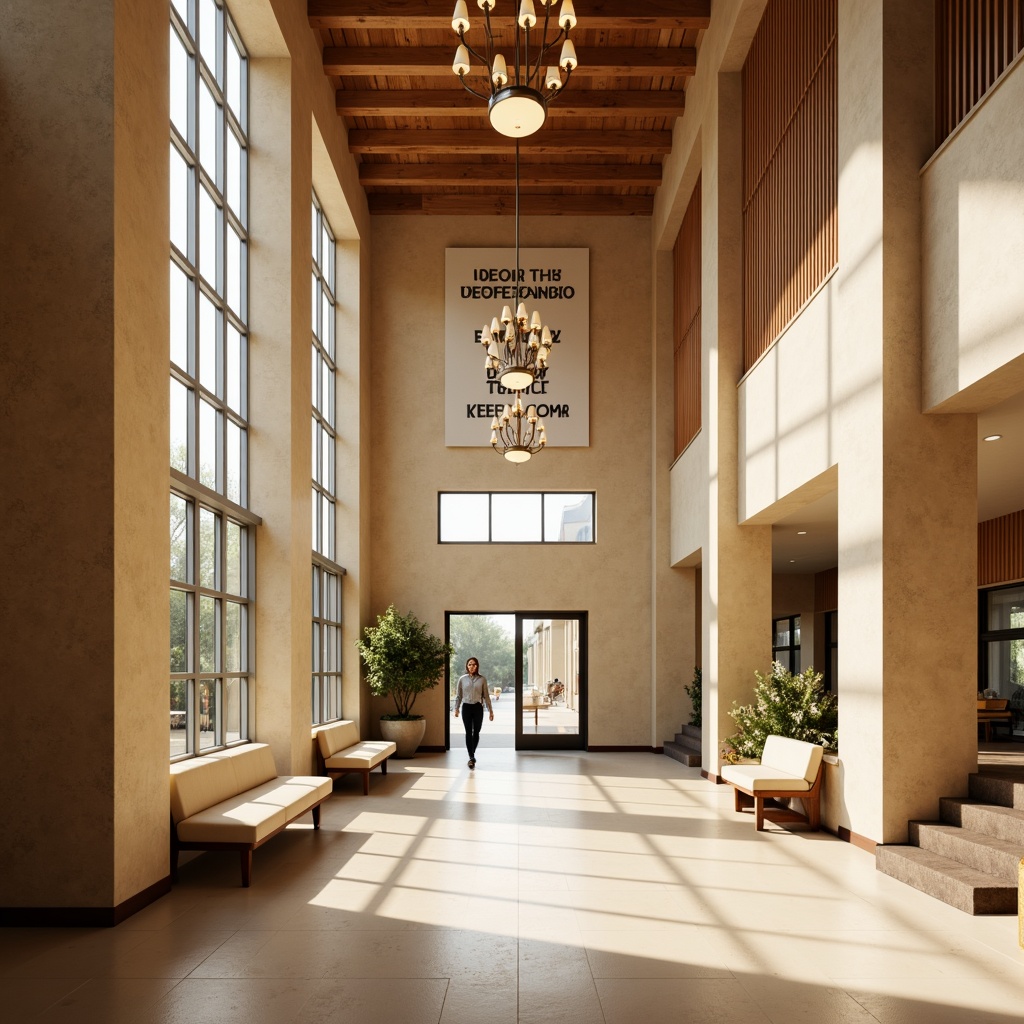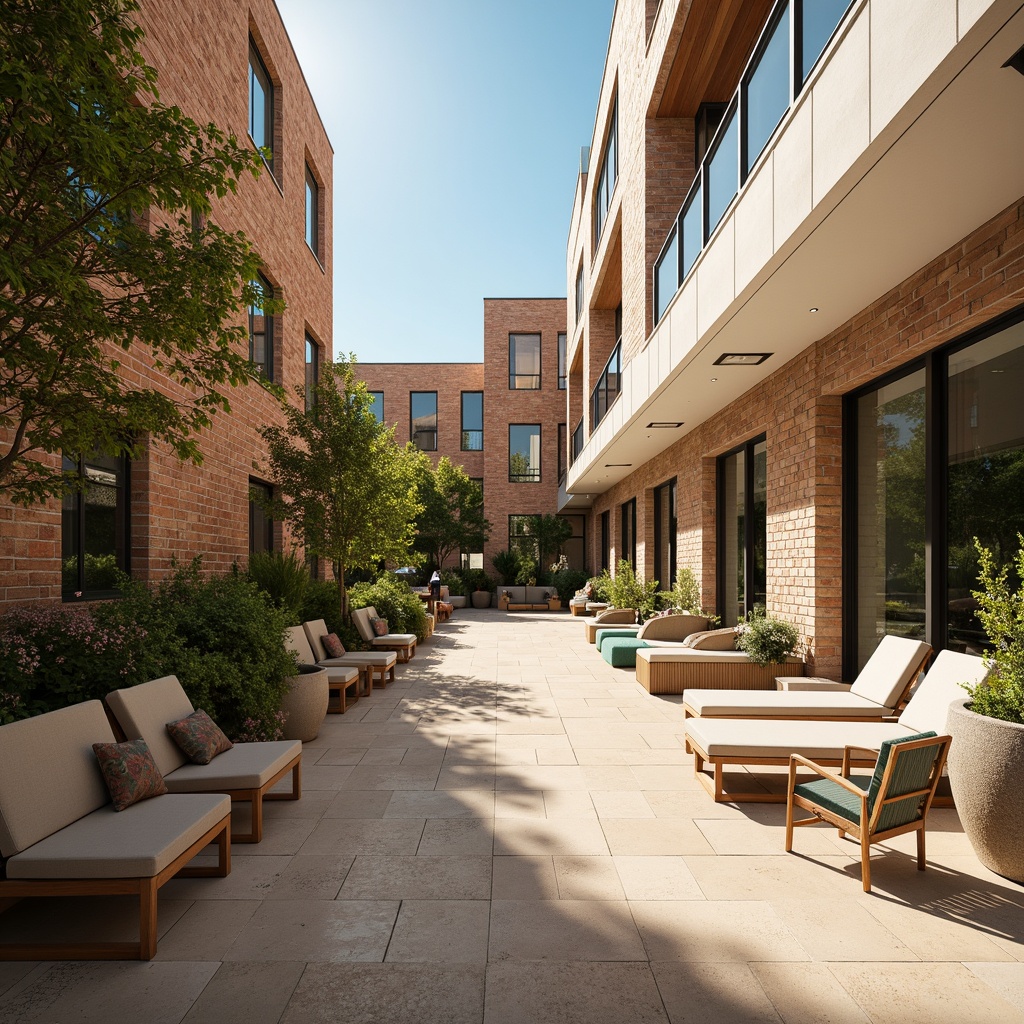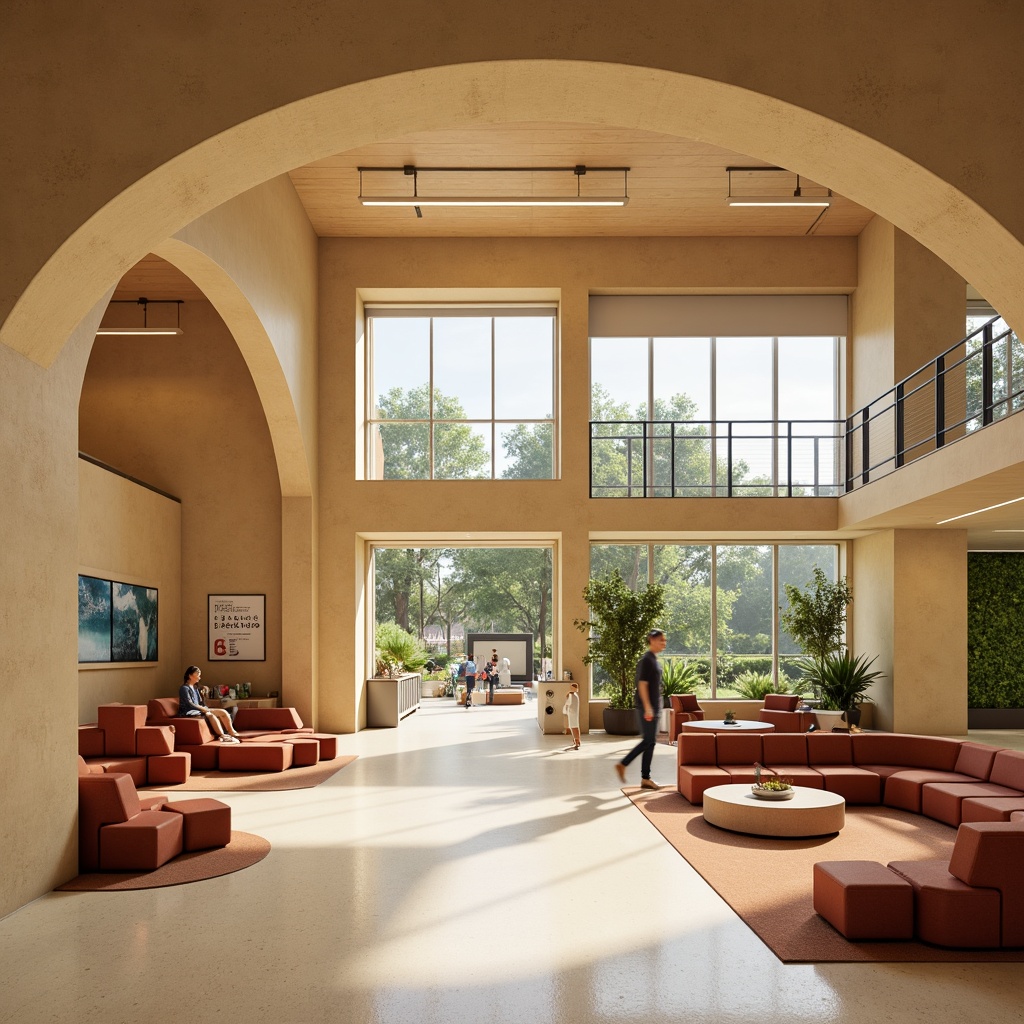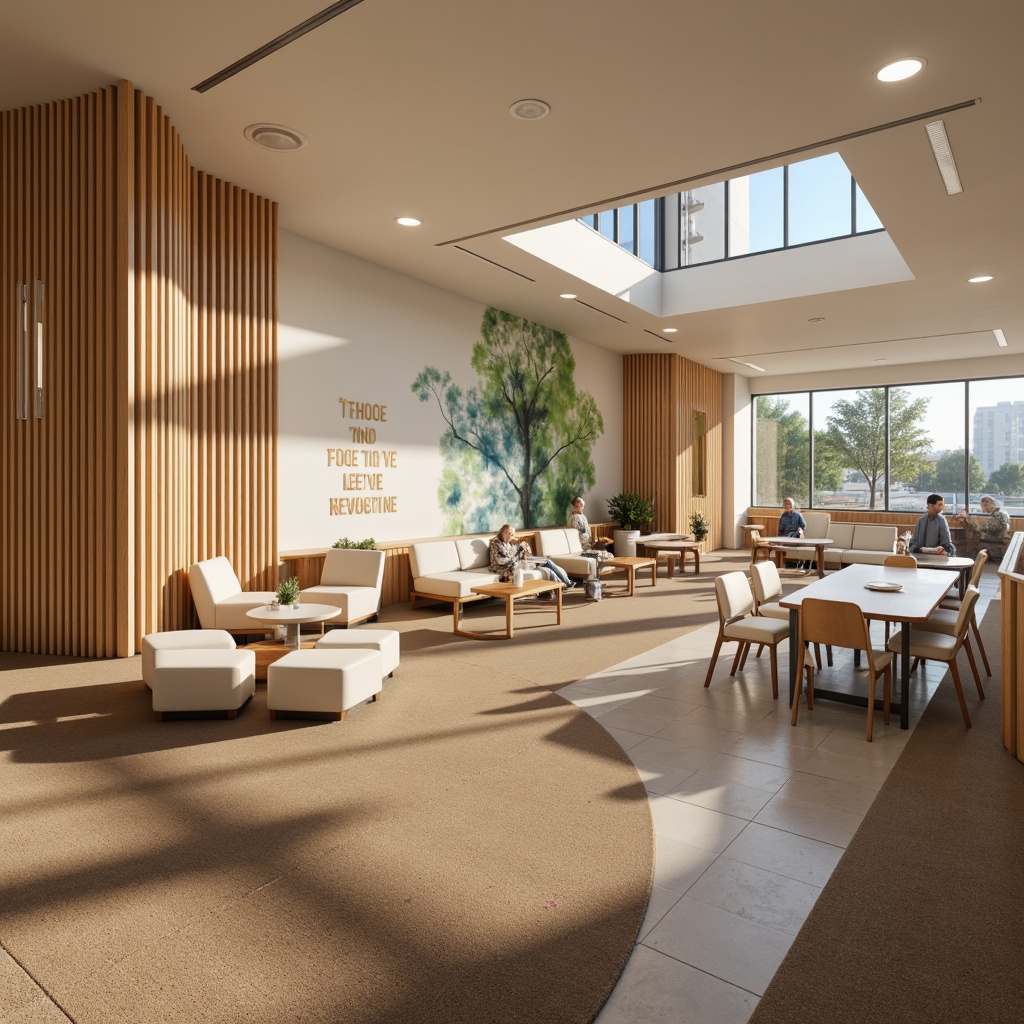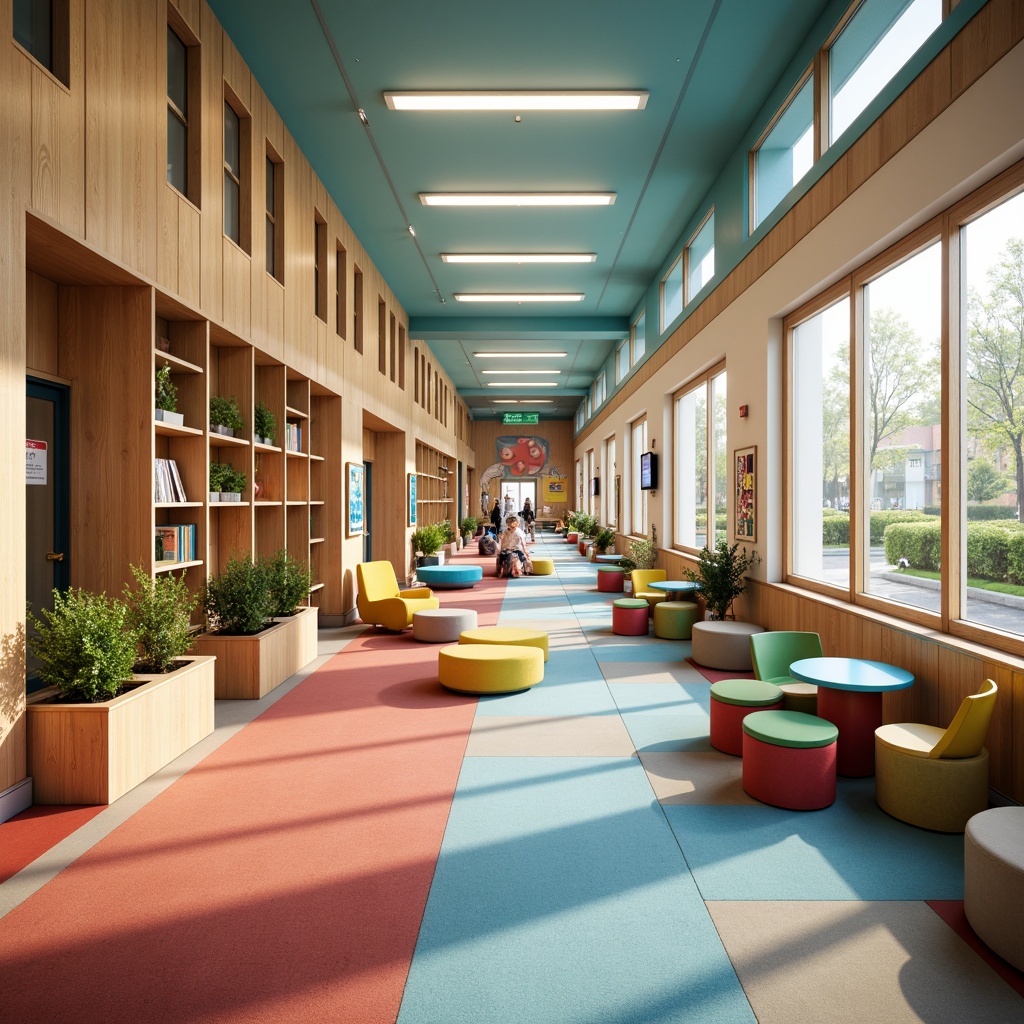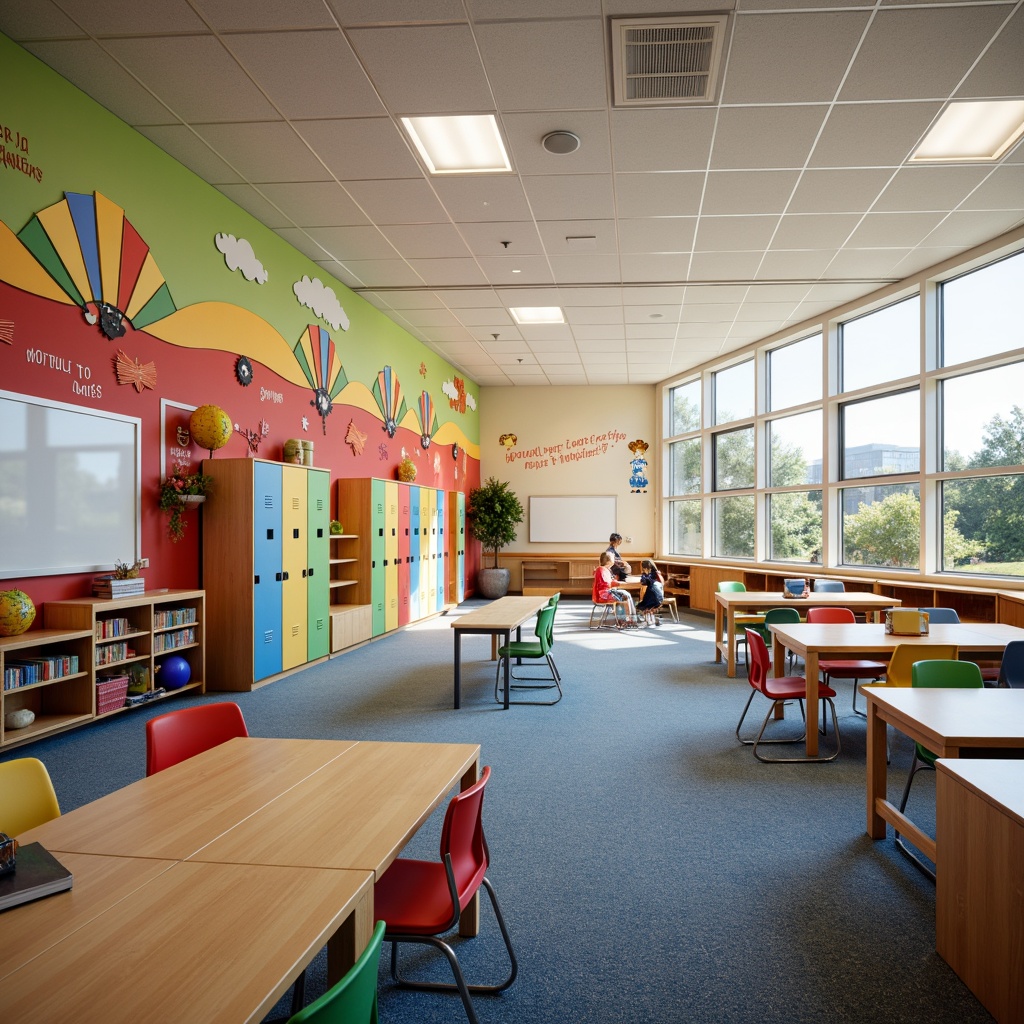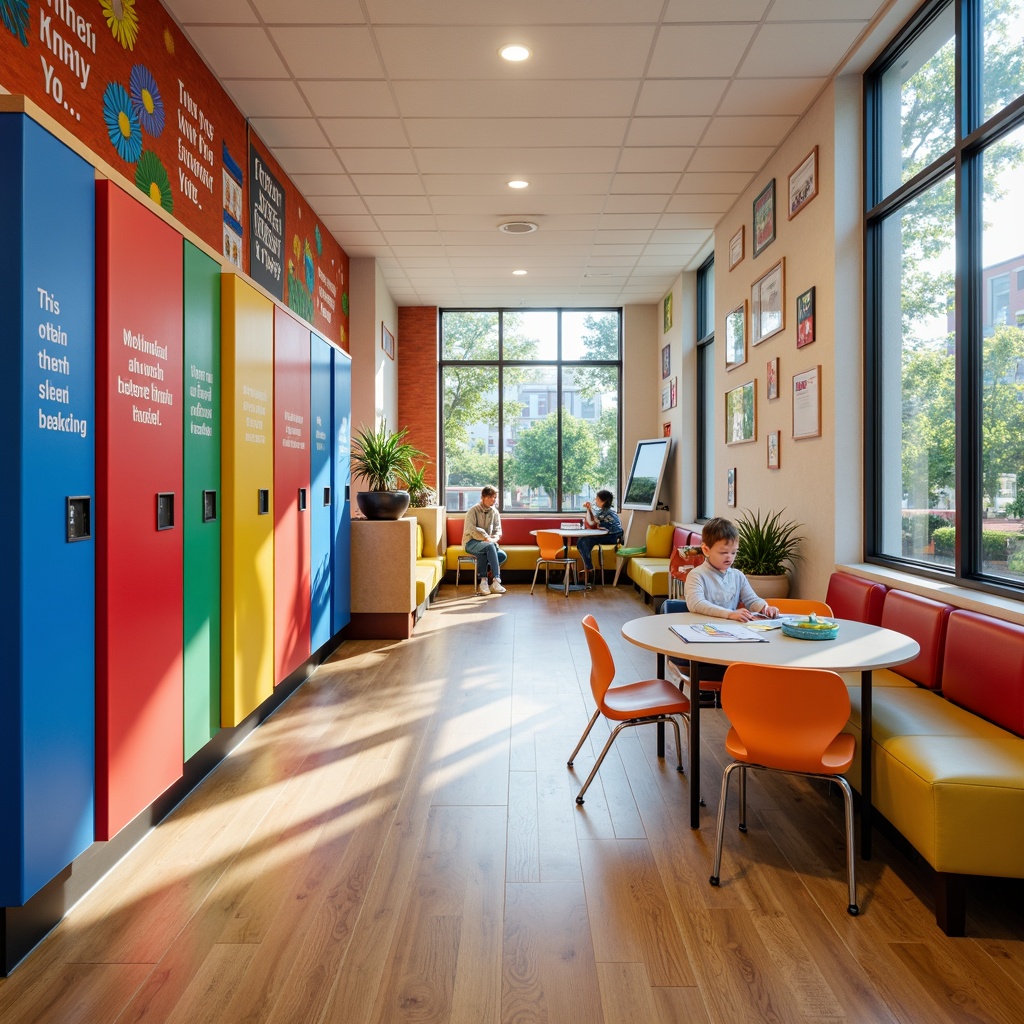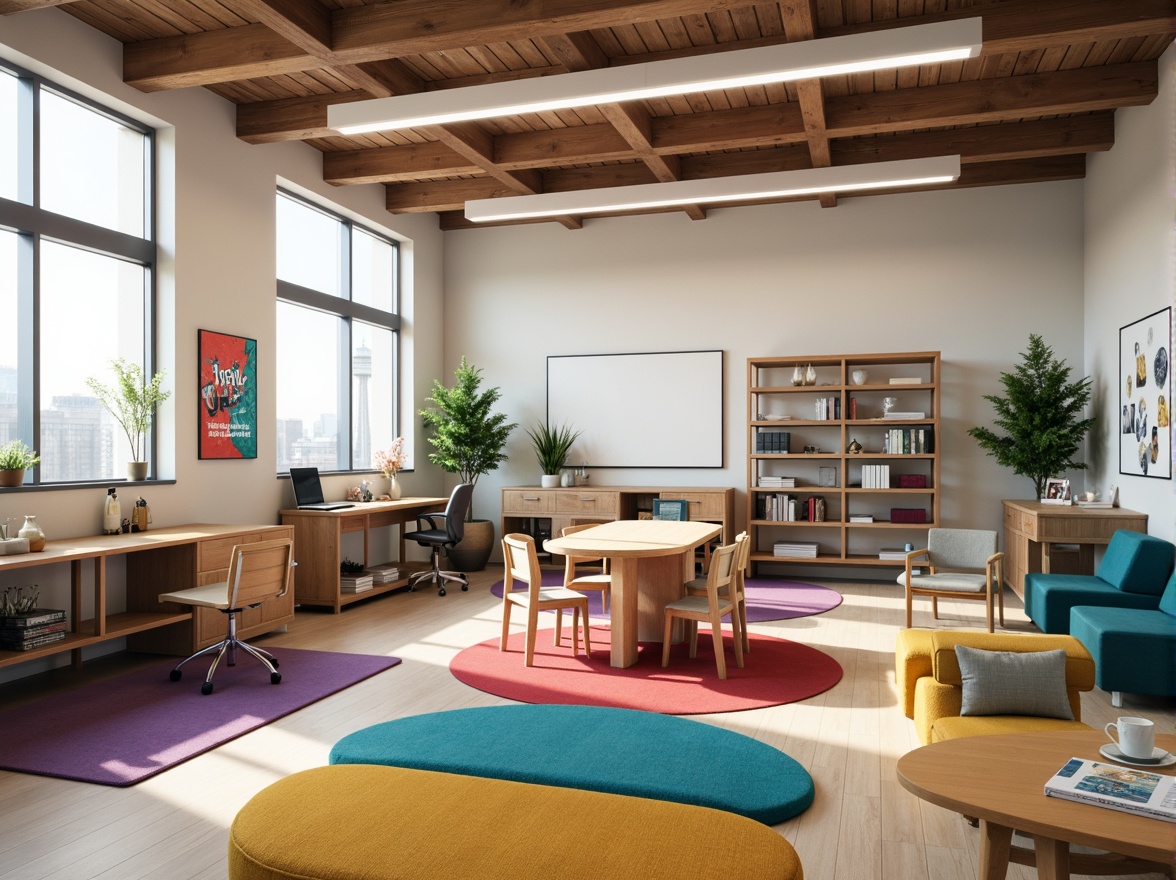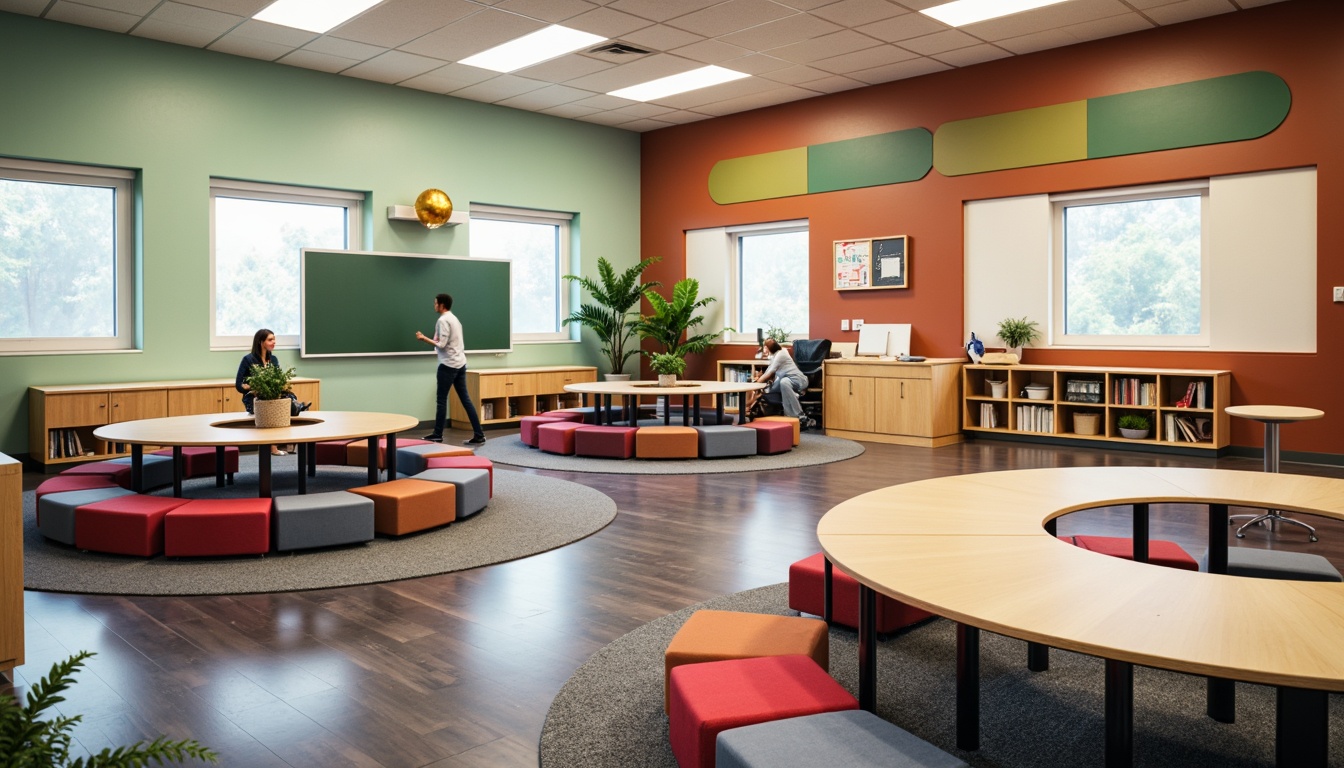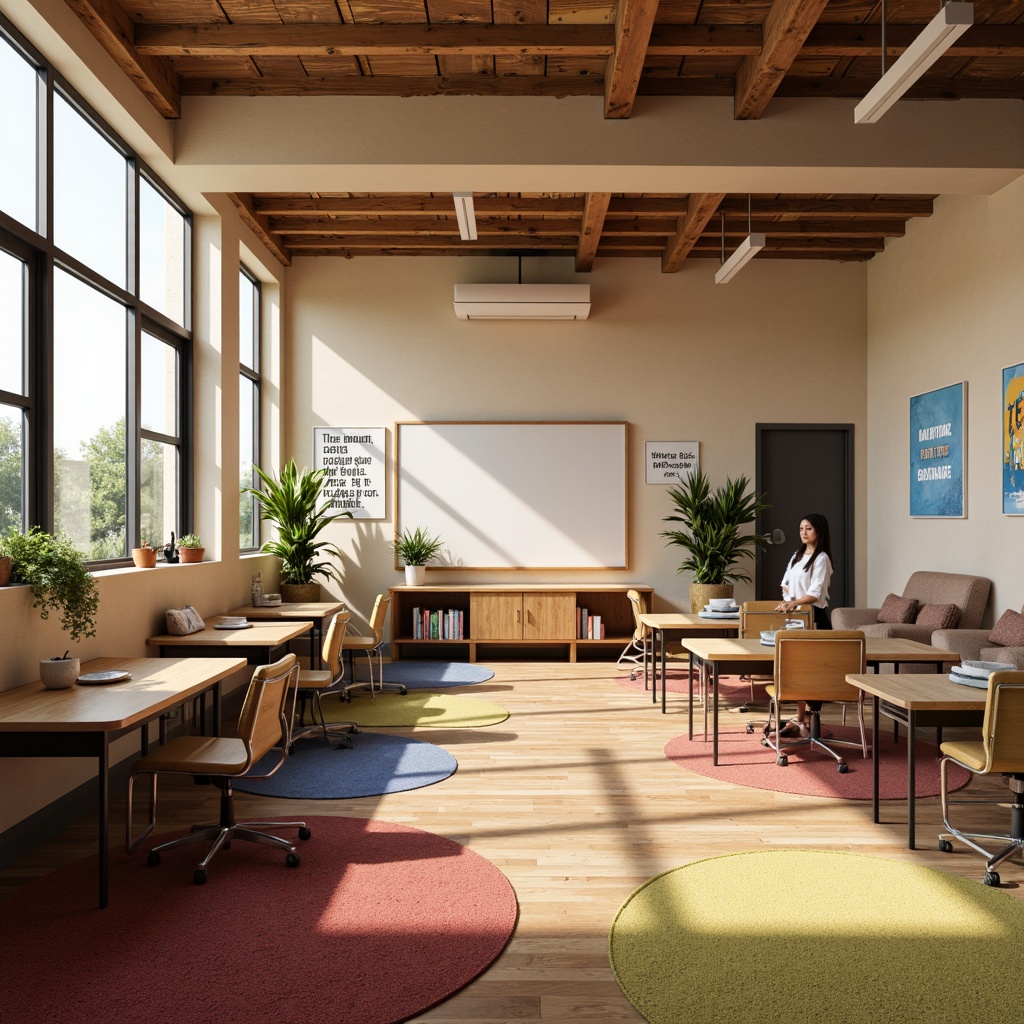دعو الأصدقاء واحصل على عملات مجانية لكم جميعًا
Design ideas
/
Interior Design
/
Elementary school
/
Transitional Style Elementary School Interior Design Ideas
Transitional Style Elementary School Interior Design Ideas
Explore the captivating world of transitional style interior design specifically tailored for elementary schools. This design approach harmoniously blends traditional and contemporary elements to create inviting and functional spaces where children can thrive. By utilizing plaster materials and a soothing amethyst color palette, these designs ensure that classrooms and hallways are not only aesthetically pleasing but also conducive to learning. Dive into our collection to discover innovative layouts, color schemes, and textured walls that enhance the educational experience.
Innovative Classrooms in Transitional Style Elementary Schools
In transitional style elementary schools, classrooms are designed to foster learning and creativity. The combination of traditional elements with modern aesthetics creates an engaging environment for students. By incorporating flexible furniture layouts and textured walls, teachers can easily adapt the space for various activities. The use of amethyst color in the classroom can stimulate creativity, making it a perfect choice for young minds. With thoughtful design, these classrooms not only accommodate learning but also offer a sense of warmth and comfort.
Prompt: Vibrant elementary school, transitional style architecture, warm beige walls, large windows, natural light, flexible seating arrangements, collaborative learning spaces, interactive whiteboards, colorful rug patterns, wooden desks, ergonomic chairs, abundant greenery, living walls, open shelving units, softbox lighting, shallow depth of field, 1/1 composition, realistic textures, ambient occlusion.
Prompt: Vibrant elementary school, transitional style architecture, natural stone fa\u00e7ade, wooden accents, large windows, soft warm lighting, collaborative learning spaces, colorful rug patterns, ergonomic desks, comfortable seating areas, interactive whiteboards, educational technology integration, cozy reading nooks, flexible modular furniture, open shelves, playful decorative elements, green walls, airy atmosphere, shallow depth of field, 3/4 composition, realistic textures, ambient occlusion.
Prompt: Warm transitional style elementary school, natural stone fa\u00e7ade, large windows, wooden accents, open concept classrooms, collaborative learning spaces, ergonomic furniture, colorful rugs, interactive whiteboards, educational technology integration, soft warm lighting, shallow depth of field, 3/4 composition, panoramic view, realistic textures, ambient occlusion, vibrant student artwork displays, cozy reading nooks, flexible seating arrangements, built-in shelving units, earthy tone color palette, organic shapes, minimalist decor.
Welcoming Hallways in Transitional Style Schools
Hallways play a crucial role in elementary school design, serving as pathways that connect different spaces. In transitional style schools, hallways are designed to be inviting and vibrant. Incorporating a thoughtful color scheme that includes amethyst hues can create a sense of continuity throughout the school. Textured walls can add depth and interest, making the walk from one classroom to another an engaging experience. These hallways should encourage movement while also providing areas for collaboration and social interaction among students.
Prompt: Inviting school entrance, warm beige walls, rich wood accents, elegant chandeliers, soft cream-colored floors, comfortable benches, inspirational quotes, natural light pouring, spacious high ceilings, subtle texture contrasts, modern minimalist furniture, sophisticated color palette, harmonious blend of classic and contemporary elements, warm neutral tones, 1/1 composition, shallow depth of field, realistic materials, ambient occlusion.
Thoughtful Color Schemes for Transitional Style Schools
Color schemes are essential in creating a cohesive look within elementary schools. The use of amethyst as a primary color in transitional style designs brings a sense of calm and inspiration to the learning environment. This color can be complemented with neutral tones and playful accents to create a stimulating atmosphere. By carefully selecting colors for different spaces, designers can influence the mood and energy of classrooms and hallways, enhancing the overall educational experience for children.
Prompt: Earth-toned brick buildings, natural stone accents, warm beige walls, rich wood tones, comfortable lounge seating, vibrant turquoise accents, soft cream-colored ceilings, abundant natural light, modern minimalist lighting fixtures, eclectic mix of traditional and contemporary furniture, lush greenery, blooming flowers, sunny day, shallow depth of field, 3/4 composition, panoramic view, realistic textures, ambient occlusion.
Prompt: Warm beige walls, rich wood accents, soft cream-colored floors, elegant archways, modern metal railings, subtle earth tones, calming natural light, spacious classrooms, collaborative learning spaces, comfortable seating areas, vibrant greenery, living walls, inspirational quotes, motivational posters, sleek technology integration, minimal ornamentation, harmonious color balance, 1/1 composition, soft focus, warm ambient lighting.
Prompt: Warm beige walls, rich wood accents, soft cream-colored furniture, earthy brown carpets, natural stone floors, calming blue-green murals, inspirational quotes, modern minimalist lighting fixtures, sleek metal staircases, open-concept classrooms, collaborative learning spaces, flexible seating arrangements, abundant natural light, warm indirect lighting, shallow depth of field, 3/4 composition, realistic textures, ambient occlusion.
Textured Walls in Elementary School Design
Textured walls are a distinctive feature in transitional style elementary schools, adding visual interest and tactile engagement to the environment. These walls can be created using various plaster techniques, allowing for a unique design that captures children's attention. By incorporating different textures, designers can enhance acoustic properties, making spaces more conducive to learning. Textured walls also provide a backdrop for educational displays, transforming blank surfaces into interactive learning tools.
Prompt: Vibrant elementary school, playful corridors, textured walls, colorful lockers, educational murals, wooden accents, natural light, open classrooms, collaborative learning spaces, ergonomic furniture, rounded corners, safety railings, acoustic ceilings, soft carpeting, circular tables, pencil-shaped columns, whimsical lighting fixtures, cheerful color schemes, engaging display boards, interactive whiteboards, cozy reading nooks, flexible seating arrangements, lively atmosphere, shallow depth of field, 3/4 composition, realistic textures, ambient occlusion.
Prompt: Vibrant elementary school, colorful lockers, playful murals, interactive whiteboards, wooden desks, ergonomic chairs, soft carpet flooring, natural light, large windows, modern architecture, texturized walls, acoustic panels, sound-absorbing materials, collaborative learning spaces, flexible seating arrangements, educational displays, inspirational quotes, cheerful atmosphere, warm lighting, shallow depth of field, 3/4 composition, realistic textures, ambient occlusion.
Prompt: Vibrant elementary school, playful corridors, textured walls, colorful lockers, educational murals, inspirational quotes, wooden flooring, natural light, modern classrooms, interactive whiteboards, collaborative desks, ergonomic chairs, cozy reading nooks, soft carpeted areas, fun decorative lights, circular tables, lively student artwork, energetic atmosphere, shallow depth of field, 1/1 composition, warm and inviting ambiance.
Functional Furniture Layouts for Classrooms
The furniture layout in transitional style elementary schools is critical for promoting effective learning. Flexibility in furniture arrangement allows for various teaching methods, from group work to individual study. Designers focus on creating open spaces that encourage collaboration while also considering comfort and accessibility. The use of amethyst and other complementary colors in furniture can enhance the learning environment, making it visually appealing and stimulating for young learners.
Prompt: Modern classroom interior, functional furniture layouts, ergonomic chairs, wooden desks, collaborative workspaces, interactive whiteboards, colorful rugs, natural light, airy atmosphere, minimalist decor, sleek metal shelving, comfortable seating areas, inspirational quotes, educational posters, soft warm lighting, shallow depth of field, 3/4 composition, realistic textures, ambient occlusion.
Prompt: Vibrant classroom interior, modular desks, ergonomic chairs, interactive whiteboards, collaborative learning spaces, adjustable shelving units, colorful storage bins, rounded table shapes, soft cushioned seating areas, natural wood accents, ample legroom, flexible layout arrangements, warm overhead lighting, 1/1 composition, shallow depth of field, realistic textures, ambient occlusion.
Prompt: Modern classroom interior, functional furniture layouts, ergonomic chairs, wooden desks, interactive whiteboards, vibrant color schemes, natural light pouring in, minimalist decor, flexible seating arrangements, collaborative workspaces, circular tables, comfortable cushions, built-in shelving units, decorative rugs, motivational quotes, inspirational artwork, airy atmosphere, soft warm lighting, shallow depth of field, 1/1 composition, realistic textures, ambient occlusion.
Prompt: Cozy classroom setting, ergonomic chairs, wooden desks, collaborative workstations, inspirational quotes, educational posters, interactive whiteboards, colorful rugs, natural light pouring in, warm beige walls, modern minimalistic decor, flexible seating arrangements, acoustic panels, comfortable reading nooks, built-in shelving units, rustic wood accents, creative storage solutions, technology-integrated tables, adjustable lighting systems, 1/1 composition, softbox lighting, realistic textures.
Conclusion
In summary, transitional style interior design for elementary schools combines traditional and modern elements to create warm, inviting, and functional spaces. The use of plaster materials and an amethyst color palette enhances the aesthetic appeal while fostering a conducive learning environment. From innovative classrooms to welcoming hallways, thoughtful color schemes, textured walls, and functional furniture layouts, these design choices significantly improve the educational experience for students. This style is perfect for schools aiming to provide a nurturing atmosphere where children can grow and learn effectively.
Want to quickly try elementary-school design?
Let PromeAI help you quickly implement your designs!
Get Started For Free
Other related design ideas

Transitional Style Elementary School Interior Design Ideas

Transitional Style Elementary School Interior Design Ideas

Transitional Style Elementary School Interior Design Ideas

Transitional Style Elementary School Interior Design Ideas

Transitional Style Elementary School Interior Design Ideas

Transitional Style Elementary School Interior Design Ideas


